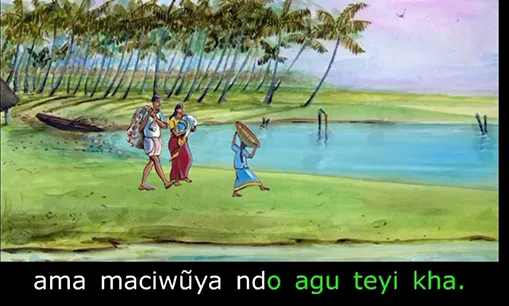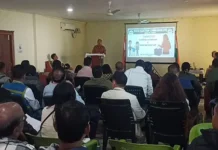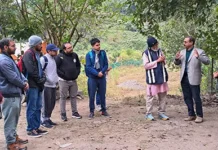[Nabanita Deshmukh]
The modern era is marked by great technological advances and rapid globalisation, but on World Folklore Day, the question to ask is: How relevant are folklores today?
Surprisingly, modern culture still needs folklores, but do you know why? That is because folklores mould identities, strengthen community bonds, and even impact media and contemporary art. To know more about it, let us read what else folklore has to offer.
Nurturing cultural roots
Every community has its unique set of stories, myths, rituals and customs that are passed from one generation to the next. These myths, stories, etc, are not mere entertainment but are carriers of collective memory and values of ancestors and community elders.
In today’s multicultural societies, individuals from a particular community often live far from their ancestral homelands. It is here that folklores become important, because they reconnect them to their roots and shield them from alienation.
A large number of people from the Northeast, for instance, have moved out of their states to live in cities in mainland India. However, despite staying there for years, they face frequent discrimination, taunts and even assaults.
The film Axone poignantly portrays the struggles of youngsters from Northeast India regarding food choices which takes on a psychological dimension. Fortunately, many indigenous groups have been formed that offer support and conduct programmes on cultural themes. These festivities bring Northeastern people together and they feel less alienated, threatened and vulnerable.
Apart from offering solace to alienated groups, folklores also counter dominant narratives that threaten to obliterate the cultures and languages of minorities. By keeping traditional tales alive, marginalised communities assert their importance and uniqueness.
Strengthening social ties
The tribal communities of Arunachal Pradesh have their own festivals such as the Reh of the Idu Mishmis, the Solung of the Adis, the Manau Poi of the Singphos, the Sangken of the Tai-Khamtis, the Tamladu of the Kamans and the Taraons, etc. These colourful events showcase the unique culture of indigenous communities and strengthen bonds of friendship among the people.
Folklores are largely community-driven and thrive on shared values and interactions. Festivals, ritualistic ceremonies, storytelling sessions, folkdances and songs get people together and foster unity and cooperation. More so in today’s digital world where face-to-face interaction is minimal, these vibrant communal gatherings provide deep rooted connections and meaningful dialogues.
Guidance and lessons
All indigenous communities have folktales that clearly lay out rules of ethical conduct. In the ‘Triumph of Truth’ an Adi folktale, retold by Obang Tayeng, the mithun (Bos frontalis) becomes the bone of contention between its rightful owner called Da:diSomi and an evil spirt named MédéngSene. Thanks to the timely intervention of Matai, the creator’s daughter, the mithun goes back to Da:di Somi after a simple contest of making the animal walk over a bridge. Da:diSomi successfully makes the mithun cross the bridge, but the bridge collapses when the MédéngSene leads the animal over it, proving that Da:diSomi is indeed the real owner of the mithun. Truth eventually triumphs over greed and domination.
Folklores are embedded with rules of conduct and ethical codes. For example, many folktales, myths, fables, and legends often emphasise ideas of what is right over wrong and highlight qualities such as courage, justice, kindness and humility through symbolism and metaphors.
In modern culture, these stories continue to act as informal guidebooks for teaching values -especially to children. Storytelling’s benefits are now recognised by psychologists worldwide. These therapists often draw on myths and fables to help troubled children combat stress and cope with adversity.
Folklore also influences adult behaviour by highlighting the pitfalls of undesirable conduct. The ethical lessons evolve over time but retain their core principles and help people cope with psychological and physical challenges.
Art and media
The influence of folklores over art and media is substantial. Literature, films, music, theatre, visual arts, and even popular video games use elements from mythologies and folktales to woo larger audiences. In India, for example, the video game ‘Raji: An Ancient Epic’, which draws inspiration from Hindu mythology has become popular with players.
Moving on to books, Amish Tripathi’s Meluha and other stories on gods and demons dexterously blend elements of folklores and legends into a modern narrative, making his work interesting for readers.
Language preservation
Folklores are transmitted through language. It is a repository of dialects, idioms, proverbs, oral storytelling traditions, etc. Most indigenous languages, however, are threatened or on the verge of extinction due to various factors – one of them being the dwindling number of native speakers.
Reviving folkloric traditions therefore could help in indigenous language preservation. The younger generation could get an immersive linguistic experience if elders of their communities shared stories in their native tongues during festivals or events. This sharing of traditions, be they stories, songs or chants, would develop fluency and also inculcate in youngsters a sense of pride in their linguistic heritage.
Yet, the question always remains on how to safeguard oral folkloric traditions that were and are still used by indigenous communities? Some of the ways for doing it is through digital documentation, written scripts and translations of folkloric resources into other tongues.
AniBooks
The Billion Readers project in Arunachal Pradesh aims to do just that. Folktales are collected from indigenous communities. These tales are then rewritten by community writers, recounted and illustrated by indigenous artists and made into animated books in native languages with same language subtitling (SLS) and synchronised narration.
Additionally, folk stories from other communities across India are translated by Arunachali language experts. Later, the tales are narrated by native speakers and made into engaging AniBooks for children. The project aims to preserve tribal languages and showcase the rich linguistic and cultural heritage of Arunachali communities. It is a language preservation initiative ‘by communities and for communities’.
Conclusion
Folklores preserve cultural identities, strengthen community ties, offer moral guidance, safeguard languages and provide psychological relief. Modern culture therefore needs folklores even more now to link a vibrant past with a fast-changing present.
Therefore, far from being a relic of the past or a mere collection of stories found in dusty anthologies, folklores can be considered a beacon of hope for numerous communities across the globe that are struggling to keep their cultures, languages and identities afloat.
For some of us, it matters little whether we belong to a community or not. What truly counts is that despite the rapid changes taking place in our society, folklores still play a pivotal role in our day-to-day lives and this gives us a sense of belonging to myriad communities – not only in India but in many regions across the world. (Nabanita Deshmukh is a facilitator for the Billion Readers project in Arunachal Pradesh)




